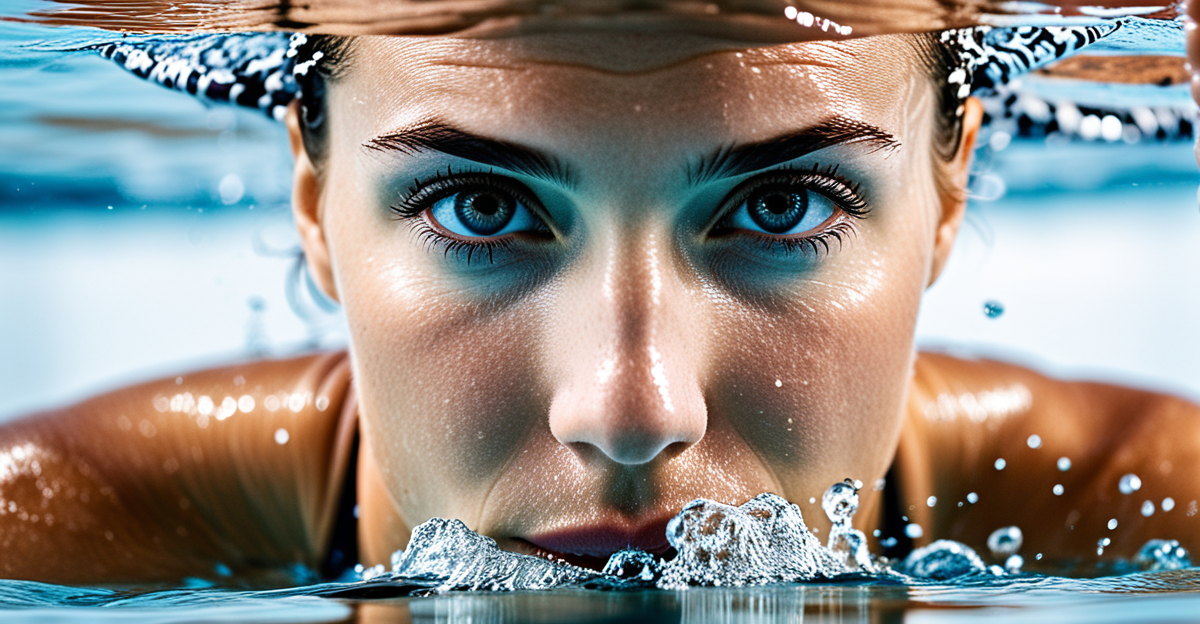Essential macronutrient ratios for swimmers
Understanding the macronutrient needs in swimmer nutrition is vital to fuel swim training effectively. The optimal balance among carbohydrates, proteins, and fats ensures swimmers maintain peak performance during intense sessions. Carbohydrates are the primary energy source, contributing approximately 55-65% of total daily calories. This ratio supports the high-intensity bursts and endurance necessary for competitive swimming.
Proteins should make up about 15-20%, aiding in muscle repair and adaptation after training. Adequate protein intake enhances recovery, preventing overuse injuries common in swimmers. Fats, comprising roughly 20-30% of calories, support overall health and provide a sustained energy source during longer swims or lower-intensity workouts.
This might interest you : Indomitable sports stars: proven techniques for overcoming key athletic challenges
Scientific studies confirm these ratios help maintain glycogen stores and promote muscle synthesis. For example, a swimmer’s meal might include whole-grain pasta with lean chicken and a side of vegetables drizzled with olive oil, combining carbohydrates, proteins, and healthy fats in the right proportions. Tailoring macronutrient distribution to training phases will maximize both energy availability and recovery efficiency throughout the swimming season.
Strategic meal timing to maximise energy and recovery
Timing meals is crucial in swimmer diet plans because it optimises the availability of fuel and supports recovery. Eating at strategic intervals around training enhances both performance and muscle repair.
Also read : Ultimate shoulder protection: key strength exercises for athletes to avoid injuries
Pre-training nutrition should supply accessible energy, focusing on carbohydrates with some protein about 1-3 hours before swimming. This ensures glycogen stores are topped up and muscles receive amino acids without discomfort from digestion. For example, a banana with yogurt or a small bowl of oatmeal fits well.
Post-training nutrition aims to replenish glycogen and kickstart muscle synthesis. Consuming carbohydrates along with proteins within 30-60 minutes post-session optimises recovery. An example is a turkey sandwich paired with fruit or a smoothie combining protein powder and berries.
Studies show that meal timing affects energy availability and recovery rates significantly, reducing fatigue and muscle soreness. Planning snacks and meals thoughtfully as part of the swimmer nutrition routine can result in noticeable improvements in training quality and adaptation to load.
Hydration strategies for peak swim performance
Maintaining proper swimmer hydration is essential to sustain energy and prevent performance decline. Water loss occurs even during swimming, so following tailored hydration guidelines before, during, and after workouts is vital.
Pre-workout hydration should begin 2-3 hours prior, consuming about 500-600ml of fluids to ensure adequate electrolyte balance. During swim training, swimmers should sip small amounts frequently, roughly 150-250ml every 15-20 minutes, adapting based on session intensity and duration. Post-exercise hydration focuses on replacing fluids lost, ideally consuming 1.5 times the sweat lost to restore balance effectively.
Signs of dehydration range from mild fatigue to decreased coordination and muscle cramps, directly impacting swim training outcomes. Electrolyte replacement, through sports drinks containing sodium and potassium, is recommended during prolonged sessions to maintain cell function and fluid absorption.
Following these hydration strategies supports optimal muscle function and cognitive focus, reducing risks of early fatigue. Tailored fluid intake helps swimmers avoid dehydration while maximizing their energy and recovery throughout swim training.
Enhancing training results through micronutrient support
Micronutrients like iron, calcium, and vitamin D play crucial roles in swimmer nutrition and recovery. Iron supports oxygen transport in blood, essential for endurance during swim training. Calcium and vitamin D maintain bone health, reducing injury risk in high-impact dryland activities that complement swimming.
Common deficiencies in swimmers include low iron, especially in female athletes, and insufficient vitamin D due to limited sun exposure from indoor pools. Signs of such gaps are fatigue, frequent illnesses, or bone pain, which directly impair performance.
Meeting these micronutrient needs through diet involves including leafy greens, lean meats, dairy or fortified alternatives, and fatty fish. When dietary intake is inadequate, carefully monitored supplements can be introduced under professional guidance.
Integrating micronutrient-rich foods into a swimmer nutrition plan ensures optimal health and fuels vigorous training demands. By preventing deficiencies, swimmers maintain energy levels, enhance muscle recovery, and support immune function, all critical for progressing in competitive swim programs.
Customising nutrition plans for different swimmer goals and body types
Tailoring a personalised swimmer diet is essential for maximizing results across diverse swimmer profiles. Distance swimmers typically require higher carbohydrate intake to sustain prolonged energy output, while sprinters benefit from increased protein to support power development and muscle repair.
Age and gender also influence athlete nutrition plans. Younger swimmers need balanced growth-focused nutrients, whereas mature athletes may require adjustments to prevent muscle loss and support recovery. Female swimmers often need extra iron due to menstrual losses, aligning with their unique macronutrient needs.
Monitoring body composition and performance indicators helps fine-tune nutrition. For instance, if a swimmer’s body fat percentage increases without performance gains, adjusting macronutrient ratios or meal timing could optimize energy utilization. Conversely, inadequate muscle mass might signal a need for more protein and strength-focused training nutrition.
Through ongoing assessment, swimmers can adapt their personalised diet to align with training phases, ensuring energy provision, recovery, and body composition goals are met effectively. This approach supports sustained performance improvements and reduces injury risk for all body types and swimming goals.
